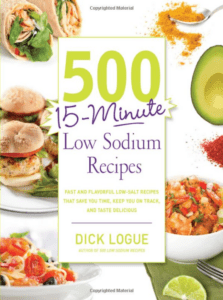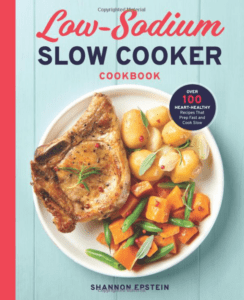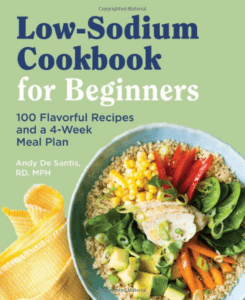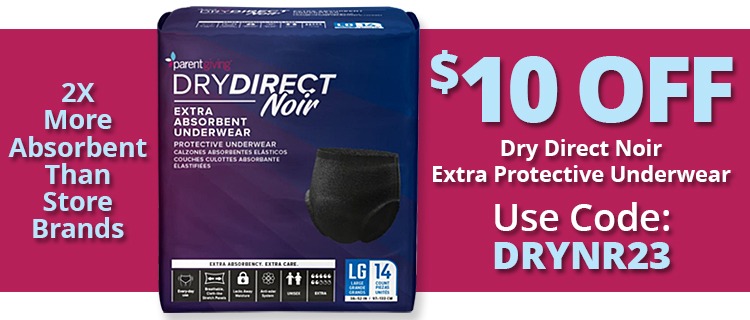Let’s admit it. Salt, also known as sodium, also known as sodium chloride-makes food taste good. In fact, our bodies can’t live without it. But what is the difference between sodium, salt, and sodium chloride?
Sodium is a mineral found naturally in foods. Celery, for example, contains sodium. Salt (found in stores labeled table salt) and sodium chloride are used interchangeably. They are added to foods because they contain the mineral sodium.
Interesting Facts About Sodium
- Sodium regulates blood pressure. Your kidneys regulate the amount of sodium in your bloodstream. If there is too much sodium, your kidneys excrete the excess sodium. If too little your kidneys retain what your body needs.
- Sodium regulates fluid volumes. Excess sodium can overload your kidneys' regulation of sodium and cause hypertension (high blood pressure) by holding onto fluid. This puts pressure on the whole cardiovascular system. Hypertension is nicknamed the silent killer due to the fact many people don’t even realize they have high blood pressure, and the consequences high blood pressure brings.
- Sodium is an electrolyte, along with potassium, magnesium, and calcium. Sodium aids the contraction of the heart muscle.
- Sodium has been found to affect brain function and many neuro-pathways related to brain function, especially in the older population.
- Recent research has discovered that salt, when added to sweet foods makes foods “sweeter” by activating the sweet receptors in our tongues.
- Only 1 level teaspoon of table salt contains 2,300 mg sodium! (This is at the upper-end limit of sodium intake for the average adult.)
- In older adults, too little sodium can be dangerous. It is estimated that up to 7% of older healthy individuals and 30% of nursing home residents have low sodium levels, also known as hyponatremia.
- Some common diuretics can cause low sodium. Always check with your doctor before restricting sodium in your diet or any other dietary changes.
How Much Sodium Should You Consume?
It is recommended that Americans consume less than 2,300 mg of sodium each day as part of a healthy eating pattern. If you have high blood pressure, the max sodium amount is 1,500 mg per day. However, on average, Americans consume more than 3,400 milligrams (mg) of sodium each day.
Why is Sodium So Dangerous?
Salt (or sodium) is in most of the foods we eat (including fruits and vegetables). Eating too much salt (or sodium), however, will increase the amount in your bloodstream. This will impact your kidneys’ ability to remove water, causing higher blood pressure. This will lead to strain on your blood vessels, heart, aorta, and kidneys. Such impact can lead to heart disease and potentially a heart attack.
Medical Conditions That Can Benefit From a Low Sodium Diet
- Meiners disease
- Hypertension
- Kidney disease and dialysis patients (sometimes caused by uncontrolled hypertension)
- Blindness (from uncontrolled hypertension)
- Congestive Heart Failure
- Stroke
Drugs that Increase Sodium Levels
- Sodium Bicarbonate (note the first word is “sodium”)
- Corticosteroids, such as prednisone and dexamethasone
- Androgens (sex hormones)
- Oestrogens, especially Estrone
- Adrenocortrophic Steroids (steroids that help with allergies, autoimmune conditions, eye drops, injections)
How Can I Reduce Sodium In My Diet?
If you are like most people, changing your diet may sound daunting. However, according to the Centers for Disease Control and Prevention (CDC), about 40% of the sodium consumed by Americans comes from the following foods:
- Deli meat sandwiches
- Pizza
- Burritos and tacos
- Soups
- Savory Snacks (e.g. chips, crackers, popcorn)
- Poultry
- Pasta mixed dishes
- Burgers (preformed patties add hidden ingredients to enhance flavor, especially sodium/salt)
- Egg dishes and omelets (cheese can contain excess added salt)
- Drinks high in sodium like V-8
Note: These are prepared foods listed by the CDC.
By reducing or eliminating your intake of the above, you will be off to a great start on reducing your overall sodium intake.
Low Sodium Shopping Tips
When shopping at the grocery store always read the nutrition facts label to find the sodium content and be sure to check the serving size. You should buy sodium-free and low-sodium options whenever possible.
Use the list below when shopping for your next meal:
- Go for fresh vegetables whenever possible. Canned foods are especially notorious for having added salt. Aim for sodium content of 120 mg/serving or less and always rinse before eating to reduce the amount of sodium. Remember to choose frozen vegetables without sauce.
- Avoid MSG (Also known as monosodium glutamate. Note the sodium.)
- Avoid sodium nitrate
- Avoid soy and Worcestershire sauces or select one of the low sodium varieties available
- Use a salt substitute, but only on the recommendation of your healthcare provider. (Salt substitutes can have possible interactions with medications you may be taking.)
- Pick up orange, lemon or garlic, and herbs to flavor your foods
- Use sodium-free condiments in your kitchen (Look for mustard and ketchup with no added salt noted on the label.)
- Buy fresh meats, fish, and poultry rather than cooked or prepared items
- Choose skinless chicken and turkey, lean meats, or seafood instead of deli meats or sausages
- Pick up unsalted nuts instead of salted pretzels or chips to snack on
- Select drinks low in sodium such as water, tea, coffee, cranberry juice, orange juice, or low-sodium diet soda (Most diet sodas fall under the low-sodium category.)
Recommended Low-Sodium Food Substitutions
Limit the Amount of... | Foods to Avoid Because of High Sodium Content | Try These Foods Instead |
Salt & Salty Seasonings |
| Fresh garlic, fresh onion, garlic powder, onion powder, black pepper, lemon juice, low- sodium/salt-free seasoning blends, vinegar |
High Sodium Sauces |
| Homemade or low-sodium sauces and salad dressings |
Salty Snacks |
| Unsalted crackers and nuts, low-sodium popcorn, pretzels and chips |
Cured Foods |
| Fresh beef, pork, poultrey, fish, eggs |
Lunch Meats |
| Low-sodium deli meats (Caution, these are likely high in phosphorus.) |
Processed Foods |
| Homemade or reduced-sodium soups, canned food without added salt |
Convenience Foods |
| Homemade casseroles without added salt, made with fresh or raw vegetables, fresh meat, rice, pasta, or no added salt canned vegetables |
Source: National Kidney Foundation
Quick Tip: Avoid the "Salty Six"
Be aware of and try to limit the “Salty Six” as determined by the American Heart Association, which includes:
- Breads, rolls, bagels, flour tortillas, and wraps
- Cold cuts and cured meats
- Pizza
- Poultry (Much of the poultry and other meats we eat are injected with sodium. Check the Nutrition Facts for sodium content or read the package for a description of a solution, for example, "Fresh chicken in a 15% solution.")
- Soup
- Sandwiches
How to Choose Low Sodium Foods When Dining Out
In addition to common foods that are high in added salt, restaurant foods can be very high in sodium content. The Menus With Price website lists 99 popular restaurant chains across the United States that can aid in menu decisions if you happen to eat at one of these restaurants. This website also has detailed nutrition including salad dressings and desserts. A similar website, I Help C, lists some of the top low sodium chain restaurants.
Which Meal Delivery Services Offer Low-Sodium Options?
Low sodium diet meal delivery services offer convenience, save steps in the kitchen, offer consistent nutritional content, and have evolved into a very popular and tasty option if you or your loved one follow a low/restricted sodium diet. The meal delivery services we recommend are Moms Meals, Magic Kitchen, Silver Cuisine and Homestyle Direct.
Mom's Meals
Mom’s Meals delivers fresh-made meals nationwide. Meals are delivered fresh, not frozen, in a fresh lock package and can be reheated in the microwave in as little as two minutes. Meals delivered by Mom’s Meals are fully-prepared, nutritionally balanced meals that provide up to 700 calories with protein, whole grains, vegetables, and snacks included.
Magic Kitchen
Magic Kitchen’s healthy, chef-prepared meals are created using top-quality fresh produce and ingredients to ensure you receive delicious, nutritious meals that are quick to prepare. The meals arrive on your doorstep frozen. The meals are ready to be heated and served.
Silver Cuisine
Silver Cuisine is a meal delivery service designed specifically for seniors. Simply select the meals you wish to have delivered, and they take care of the planning, shopping, cooking, and delivery. Their rotating menu includes over 150 alternating, delicious meal options. AARP members get 10% off every order + free shipping on your first order.
Homestyle Direct
Homestyle Direct makes healthy eating easy for everyone. All meals are designed to ensure proper nutritional content and dietary requirements. Their healthy, well-balanced meals are fully cooked, fast frozen, and delivered in a prompt and courteous manner. Medicaid approved in 24 states, with reliable shipping even to the most remote areas.
DASH Diet: A Heart-Healthy Low-Sodium Diet
The DASH DIET (Dietary Approaches to Stop Hypertension) is a low sodium diet meal plan designed to treat or prevent hypertension which includes low sodium menu ideas and meals, by making suggested modifications. The American Heart Association's low sodium diet recommendations follow the DASH (low sodium diet menu) In addition, this diet can help those who need a low sodium diet for heart failure and myocarditis by lowering the stress excessive sodium can put on the heart muscle.
A sample DASH daily menu: (sodium content in mgs listed in parenthesis)
Breakfast
¾ cup bran flakes cereal: (220)
Try shredded wheat (5) cereal instead of bran flakes for a lower sodium option.
1 medium banana (1)
1 cup low-fat milk (107)
1 slice whole wheat bread: (149)
1 tsp soft (tub) margarine (26)
1 cup orange juice (5)
Lunch
¾ cup chicken salad: (179)
Make the chicken salad without salt for 59 mg less sodium.
2 slices whole wheat bread (299)
1 Tbsp Dijon mustard (373)
Use regular mustard in place of Dijon mustard for 198 mg less sodium.
Salad
½ cup fresh cucumber slices (1)
½ cup tomato wedges (5)
1 Tbsp sunflower seeds (0)
1 tsp Italian dressing, low calorie (43)
½ cup fruit cocktail, juice pack (5)
Dinner
3 oz roast beef, eye of the round: (35)
+ 2 Tbsp beef gravy, fat-free (165)
1 cup green beans, sautéed with: (12)
½ tsp canola oil (0)
1 small baked potato: (14)
1 Tbsp sour cream, fat-free (21)
1 Tbsp natural cheddar cheese, reduced-fat (67)
Use low-sodium, reduced-fat cheddar cheese for 66 mg less sodium.
1 Tbsp chopped scallions (1)
1 small whole wheat roll: (148)
+ 1 tsp soft (tub) margarine (26)
Use unsalted margarine for 26 mg less sodium.
1 small apple (1)
1 cup low-fat milk (107)
Recommended Cookbooks for Low-Sodium Recipies
500 15-Minute Low Sodium Recipes

Packed with 500 recipes to choose from, you’ll find everything from beef, chicken, and vegetable dishes to international takeout-style recipes, desserts, and more.
You'll find a nutritional breakdown for every recipe making it easy to track your daily sodium intake and stay on track.
Low Sodium Slow Cooker Cookbook

With 100 recipes that take 30 minutes or less to prep, this cookbook makes it easy to enjoy time-saving meals that are high on flavor but low on sodium.
And don't forget, one advantage to slow cookers is you almost always have leftovers, which can freeze for a later meal. We call that a win!
Low Sodium Cookbook for Beginners

If you're recently been told to watch your sodium intake or switch to a low-sodium diet, you're probably feeling overwhelmed. The Low Sodium Cookbook for Beginners will show you how to 'phase down' your sodium intake to help your taste buds adjust with a tasty meal plan that reduces your sodium week by week.
Low sodium has never tasted so good!
In Conclusion
The first thing you can do is take the salt shaker off your table then follow our tips listed above to help create a low sodium heart-healthy lifestyle. Heart disease is considered the silent killer so take proactive steps today to reduce your sodium intake and that of your aging loved ones.


